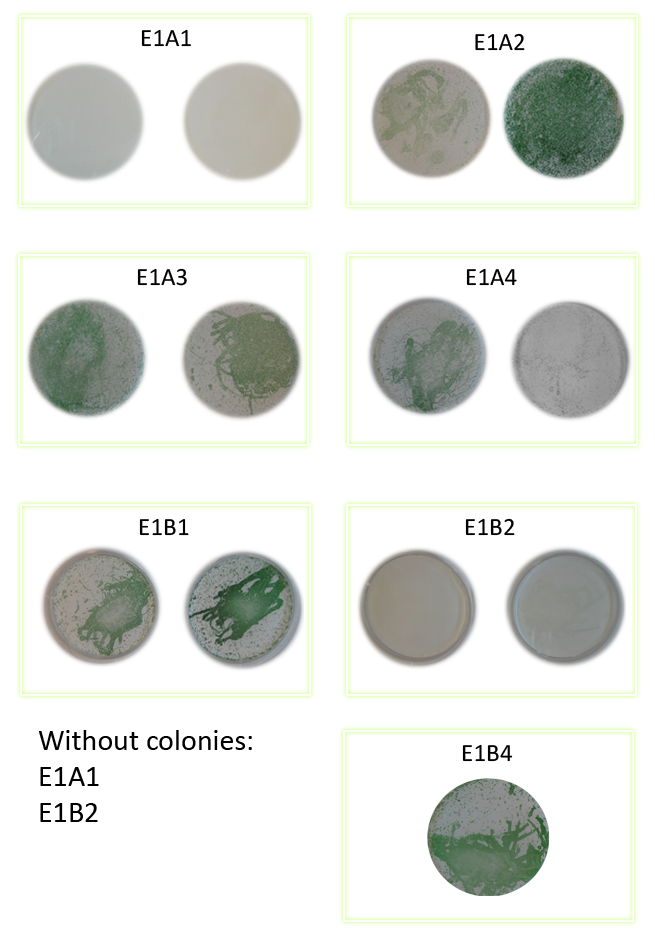Team:Uppsala-Sweden/rna
From 2009.igem.org
Karl.brune (Talk | contribs) (→Preliminary Results) |
|||
| Line 27: | Line 27: | ||
<center>[[Image:rna_colonies.png]]</center> | <center>[[Image:rna_colonies.png]]</center> | ||
| + | |||
| + | ==Status== | ||
| + | The antisense RNA project has been the smoothest of our projects and we will most probably have definite results of the constructs effects et the Jamboree. As of now we have inoculated all constructs except E1A1, E1B2 and E1B3, that's a success rate of 75% at the first try! While the E1B3 construct failed due to a bad transformation we, as mentioned above, have some reason to believe that the reason for the E1A1 and E1B2 might be more fun. | ||
| + | |||
| + | [[Image:Progressbar_RNA.png]] | ||
==References== | ==References== | ||
Revision as of 23:57, 21 October 2009

Contents |
The Theory
The PDC consist of three subunits; Pyruvate dehydrogenase (E1), Dihydrolipoyl transacetylase (E2), Dihydrolipoyl dehydrogenase (E3), there the E1 subunit catalyzes the initial reaction step and the E2 fill the dual role of continuing the reaction and acting as the scaffold of the complex. The E3 subunit catalyzes the final step. This is true for eukaryotes and prokaryotes alike. (Wikipedia)
The purpose of the antisense-RNA's is to inhibit the translation of two of the subunits in the PDC. We choose to inhibit the E1 and the E2 subunit because inhibition of the E1 subunit blocks the reaction from initializing while inhibition of the E2 would prevent the active complexes from forming due to it's function as a scaffold protein. Inhibition of the E3 subunit could cause unwanted build up of intermediates and therefore we choose not to aim at it.
According Ming-de Deng and Jogn R. Coleman in Ethanol Synthesis by Genetic Engineering in Cyanobacteria[1], the production of ethanol is only one percent of what could be expected from the enzyme activities measured. They conclude in the discussion propose that this is due to low substrate levels (pyruvate) or low substrate levels caused by low carbon flux [in the glycolysis] due to competition from other pathways in the organism. We further know that the inhibition of the PDC causes high levels of pyruvate in many organisms. If indeed the limiting factor for the synthesis of ethanol is the pyruvate level then the inhibition of the PDC should do the job, provided an increase of the carbon flux through the glycolysis is the result.
The design of antisense RNA's
The antisense-RNA's have been designed to be complementary to the transcribed mRNA's using Sfold. We have designed 12 antisense-RNA's that have different length and are aiming at the ribosome binding site in the beginning of the mRNA transcript and also a bit downstream where we had a high probability for an exposed segment of the mRNA's.
The Constructs

Preliminary Results
Obviously are all transformants from E1A1 and E1B2 dead, hence we assume that this is due complete inhibition of the PDC leading to cell death. These results are preliminary and we will update you at the jamboree.
Unmodified pictures can be found here:
Media:Uppsala_antisense_RNA.zip

Status
The antisense RNA project has been the smoothest of our projects and we will most probably have definite results of the constructs effects et the Jamboree. As of now we have inoculated all constructs except E1A1, E1B2 and E1B3, that's a success rate of 75% at the first try! While the E1B3 construct failed due to a bad transformation we, as mentioned above, have some reason to believe that the reason for the E1A1 and E1B2 might be more fun.
References
[1] [http://aem.asm.org/cgi/content/abstract/65/2/523 Ethanol Synthesis by Genetic Engineering in Cyanobacteria. Ming-De Deng and John R. Coleman Applied and Environmental Microbiology, February 1999, p. 523-528, Vol. 65, No. 2]
 "
"




